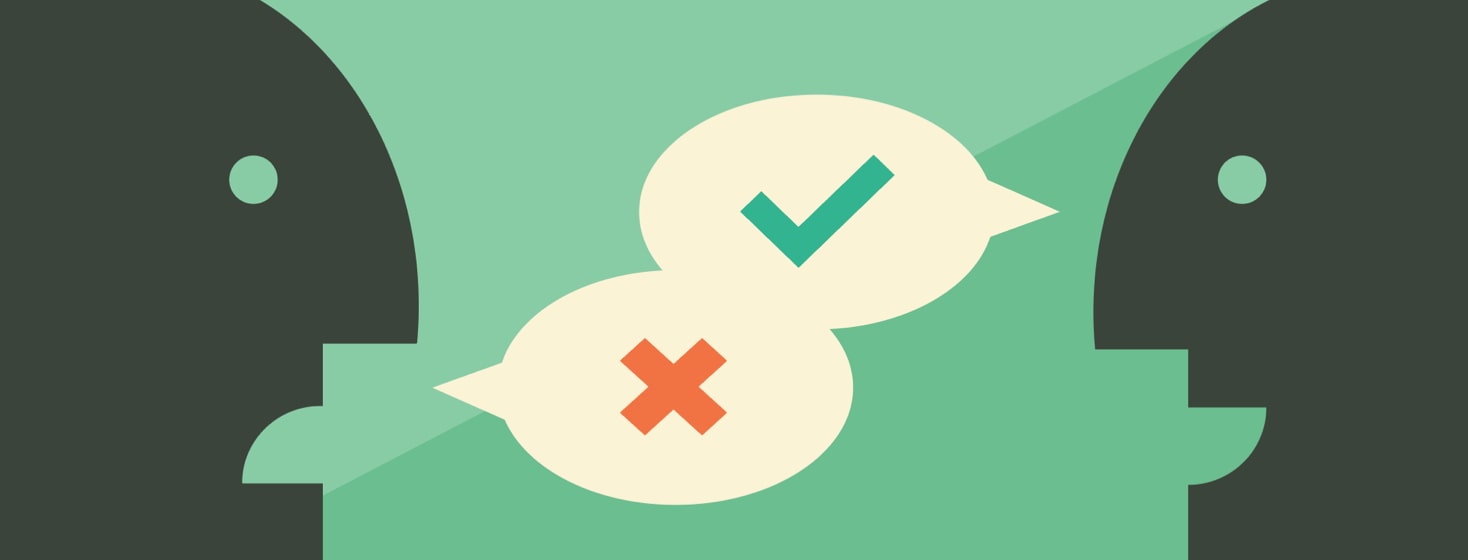Sleep Studies: 10 Myths and Legends, Debunked
Fearing the unknown breeds myths and legends. That includes what to expect during a sleep test for some disorders like sleep apnea. Relax! Here are 10 sleep study myths debunked, and the truth behind them.
Sleep study myths debunked
Myth 1: Sleep specialists can see your dreams
While sleep clinic specialists can tell when you are dreaming, and for how long, they cannot access dream content. While some researchers pursue this topic, no technology currently used in sleep centers can capture this information.1
However, sleep studies do measure REM sleep, the stage most commonly associated with dreaming. Observing and recording incidents of REM sleep helps determine sleep health quality. For instance:2-5
- Too much or too little REM indicates disordered sleep.
- Apnea that occurs only during REM informs your specialist's diagnosis and treatment plan.
- Dream enactment during REM can indicate a dangerous parasomnia linked to Parkinson's disease.
Dreaming also occurs among transitions between sleep stages and during other sleep stages.6
Myth 2: Test recordings invade your privacy
All data collected during polysomnography (your sleep test) is protected by HIPAA (the Health Insurance Portability and Accountability Act of 1996). Any images, sounds, or physiological data gathered during a test requires your expressed permission for sharing, and usually only for research purposes.7
Myth 3: Your loved ones can stay with you at the clinic
If you are under age 18 or require caregiver assistance, you may bring someone to stay overnight with you.
While it's okay to bring a loved one for support prior to your test, you’re advised against bringing food into the clinic, as most maintain scent-free policies. Also, keep young children at home. This protects the life of delicate instruments, reduces test disruptions and delays, and keeps the space safe for both you and the sleep technologist.
Myth 4: Sleep technologists sleep while you sleep
As a sleep technologist myself, I can confirm that most sleep technologists perform ongoing tasks during tests, such as:
- Caring for multiple patients and their incidental needs all night (providing blankets, water, and bathroom access, changing room conditions, or coaching sleepless patients)
- Scoring sleep tests in live mode
- Writing "tech notes" throughout the study to benefit the interpreting physician
- Preparing equipment for eventual use (supplemental oxygen, nebulizer, PAP)
- Performing titrations on patients, which requires vigilance in therapy adjustments
- Filing patient paperwork
- Troubleshooting technology (replacing faulty wires, rebooting glitchy software, adjusting signal quality)
- Tracing questionable cardiac signals
Myth 5: You can fail a sleep test
Sleep tests (at home or in the lab) are not a pass or fail situation. They are exploratory, designed to rule in or rule out multiple possible sleep disorders. All results inform the sleep specialist's diagnosis and treatment options once they're interpreted.
If anyone can "fail" a sleep study, it's the sleep technologist who isn't careful with their setup, or the rare incident where the recording and diagnostic technology doesn't work. But patients themselves do not fail these tests.
Myth 6: You'll just get a sleep apnea diagnosis even if you don't have it in order to sell CPAP
Many patients undergo testing because they've been screened as high risk for sleep apnea, but there are more than 80 diagnosable sleep disorders. Beyond sleep apnea, other disorders requiring overnight tests include:8
- Parasomnias
- Circadian rhythm disorders
- Movement disorders
- Hypersomnolence
- Sleep breathing disorders other than sleep apnea
Insomnia, while common, may sometimes require an overnight study to first rule out other causes for sleeplessness.
Myth 7: No snoring means no sleep apnea
While snoring commonly occurs with obstructive sleep apnea (OSA), not all sleep apnea features snoring. Central sleep apnea (CSA or CA) doesn't often include snoring because the body doesn't make urgent attempts to breathe. Mixed apnea (a combination of OSA and CSA) may also occur without snoring. It's worth pointing out that sometimes people do snore and don't have sleep apnea.9
Myth 8: You can use the TV to help you fall asleep
Watching TV in bed is considered poor sleep hygiene. The TV in your room during a sleep study is there so you can watch videos about sleep disorders or the test itself. In some cases, it may also help you pass the time before your study goes "lights out." Some labs may limit access to TV content in order to prevent stimulation before bedtime.
Myth 9: Never awaken sleepwalkers!
Sleep technologists practice training protocols to awaken those who become somnambulant during their studies. This happens out of a need for patient safety and to protect the equipment used in the test.
Myth 10: You can "sleep in" during your study
Most sleep testing finishes around 5:30 AM. By that time, enough data has been collected for an accurate snapshot of your sleep. After that, you need to clean up and head out. Why?
The sleep technologist typically works a 12-hour shift with limited breaks. They spend the end of their shift removing wires from multiple patients, cleaning and disinfecting equipment, preparing digital data for scoring, writing reports, and processing release paperwork. Sometimes they even change the bed linens. By morning, they're tired. They must clock out at 12 hours so they can go home and get their sleep; they'll be back at work in 12 hours.
Lingering patients often delay sleep technologists who can't leave until their patients leave. Also, many (myself included) don't get paid overtime to stay late. Please don't linger. These healthcare workers need their sleep, too!
Were any sleep study myths debunked for you? Please share a comment.

Join the conversation